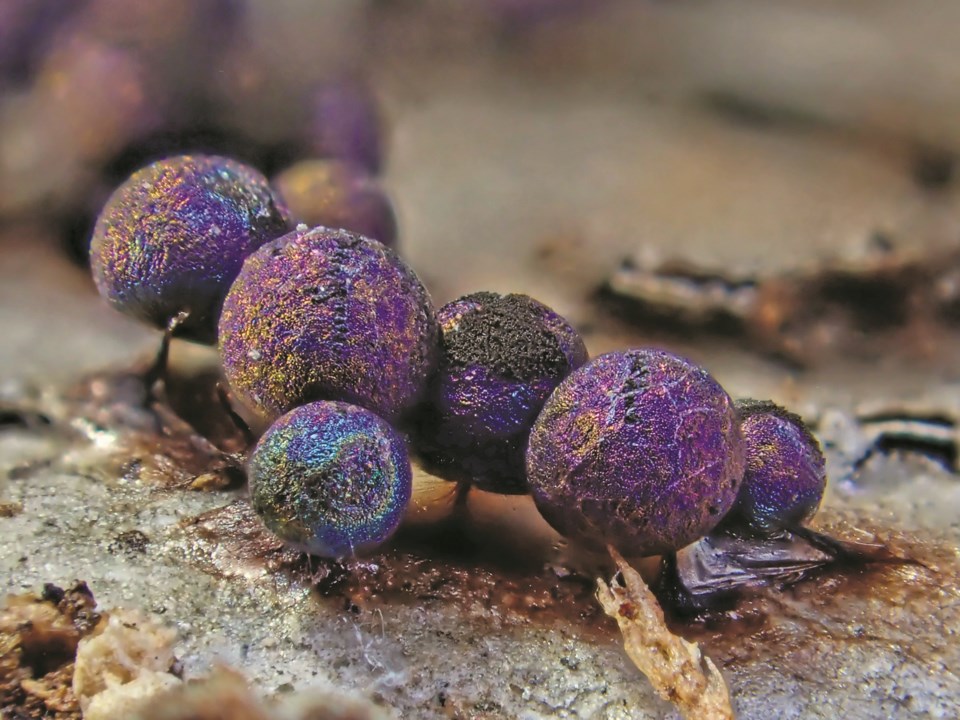The Whistler Naturalists invited my slime mould colleagues (Ryan Durand and Tyson Ehlers) and I to the first-ever Whistler Slime BioBlitz, and boy, did we have fun!
Slime moulds (Myxomycetes) are strange little guys, not plants, or fungi, or animals. Slime moulds are protists, single-celled amoebae, that live in the soil of every continent on Earth. When the time is right for reproduction, they crawl out of the ground and transform into complicated structures that produce spores.
To learn more about slime moulds, researchers have put food out arranged to imitate the nodes of the Tokyo subway system to see how efficiently the slime mould Physarum polycephalum hunts for its food. It turns out the slime mould made some efficiencies the subway engineers had missed. Another “famous” slime is Fuligo septica, which can grow quite large, at least in slime-mould terms. This slime mould inspired the 1958 science-fiction horror movie The Blob.
Going from the laboratory to the classroom, during BioBlitz, we gave several classroom presentations to students of all ages. Trying to teach six-year-olds about slime moulds quickly brought out the grandma in me—they were all such awesome little people, even the ones who couldn’t quite behave. We also gave a community presentation one evening.
But for us, the best part is always when we are outdoors looking for slime moulds—especially snowmelt slime moulds. Snowmelt (or “nivicolous”) slime moulds are adapted to developing under a persistent snowpack, and happily, there is no shortage of perfect environments for them in the Whistler area.
I live on Saturna Island, far from those snowy conditions. Tyson and Ryan live in the Kootenays where, like Whistler, it snows enough for snowmelt slimes. They introduced me to the joy of collecting snowmelt slimes, which are so much fun because they are relatively abundant, especially compared to what I find on the Gulf Islands.
You might have seen us crawling up a ski run on Blackcomb, examining the twigs, branches, dead grass and dead wood that snowmelt slimes fruit on; or watched us working our way through the bushes at Callaghan Lake looking for the perfect snow patch with a bunch of new slime aficionados in tow.
And we were so successful we haven’t had time to examine all our treasures. Together, we collected more than 300 specimens, most of which will require microscopy to positively identify. So far, we have confirmed about 30 species that are all new records for Whistler, and some for B.C., Canada, and even North America. Many of our other finds have only a handful of documented occurrences in B.C.
I could write more, but the best way to appreciate slimes is by photos. The small ones—some less than five millimetres—are the most beautiful. It is a wonder-world of iridescence, pastels, and intricate fruiting bodies.
We offer special thanks to the Whistler Naturalists for being such exceptional hosts and for all they do to promote biodiversity and conservation for Whistler.
Naturespeak is prepared by the Whistler Naturalists. To learn more about Whistler’s natural world, go to whistlernaturalists.ca.




